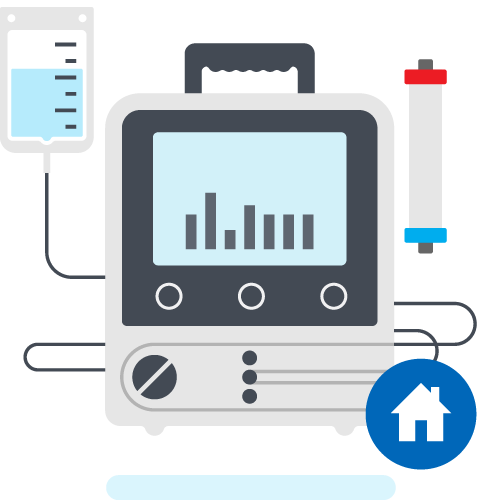Last Updated : July 26, 2024

9. Portable Dialysis Machines
Emerging portable dialysis machines present a new generation of devices that may provide people with kidney failure more options to access a home-based, point-of-care alternative to conventional dialysis at a hospital or clinic. Newer devices are smaller, more mobile, and less intrusive than the previous generation of home machines and they give people the option of undergoing treatment during waking or sleeping hours. By increasing treatment flexibility, people who do at-home dialysis typically have more energy, require fewer fluid and dietary restrictions, need fewer medications, and have overall better health outcomes.
Implications
Portable dialysis machines can transform care for end-stage renal disease and provide solutions to better support person-centred care. By changing how people with end-stage renal disease receive care, portable home options for dialysis can increase the autonomy of patients and their caregivers, and potentially reduce health care utilization and costs compared with conventional dialysis at a hospital or clinic by easing demand on hospitals and other facilities. Portable dialysis machines may also be useful in remote clinic settings with resource constraints.
Examples of newer, more portable dialysis machines include:
- Connected portable dialysis systems. The NxStage System One is a portable machine for home use available for sale in Canada. The device is connected with a tablet-based health app that collects and displays treatment data that can be shared with health care providers.
- Customizable systems.The Quanta SC+ system, which is not yet authorized in Canada, is a compact and lightweight device that features digital health connectivity. Unlike other portable hemodialysis systems, Quanta claims the SC+ system delivers higher dialysate flow rates like those typically used in conventional 3-times-a-week prescriptions, which reduces the need for daily home treatments.
Last Updated : July 26, 2024

